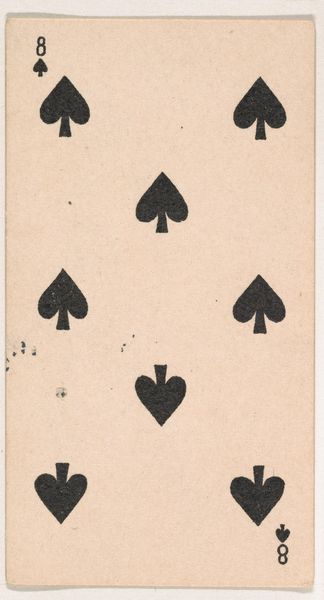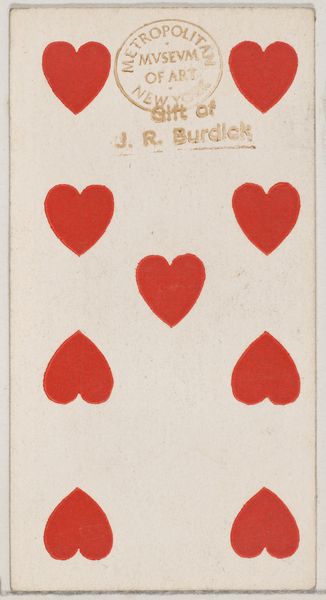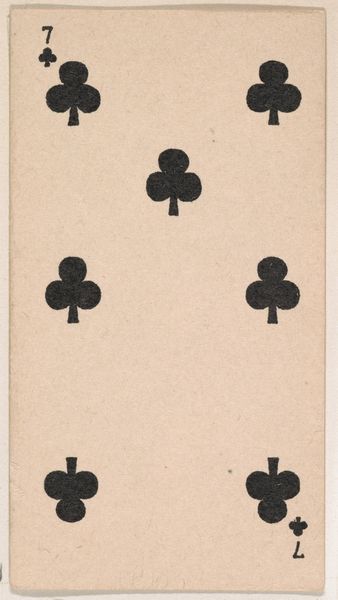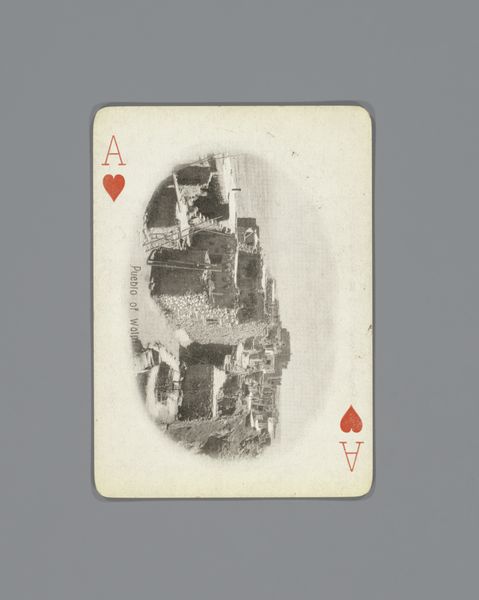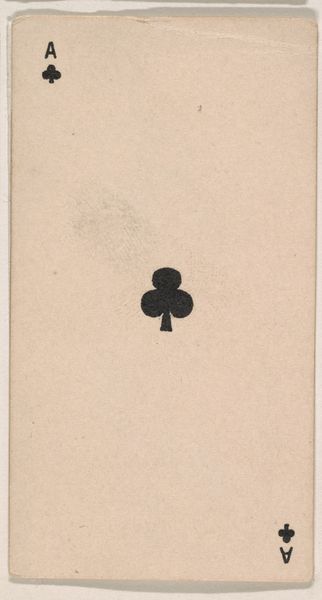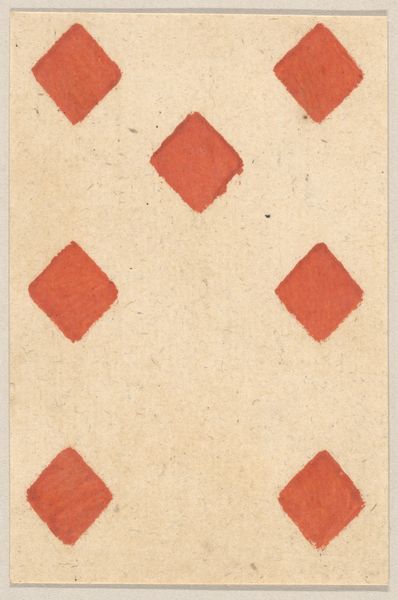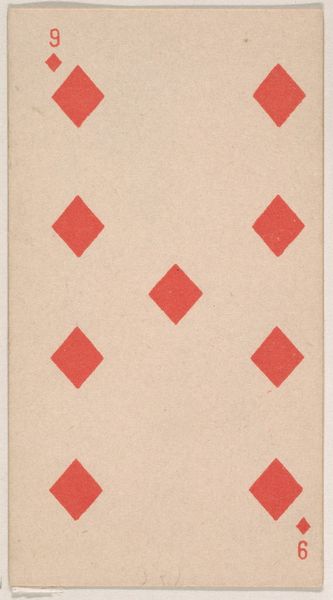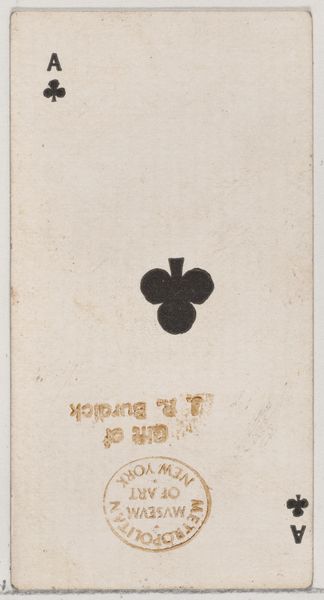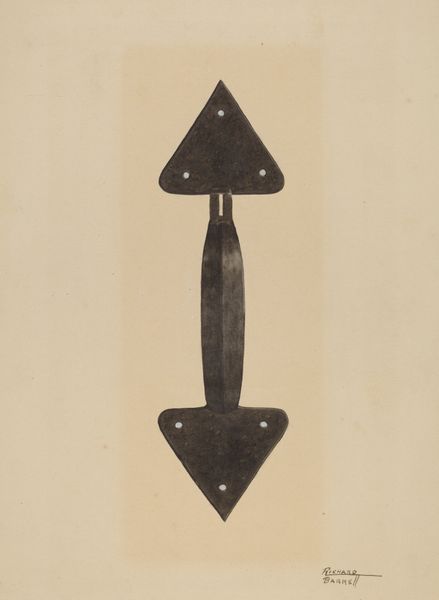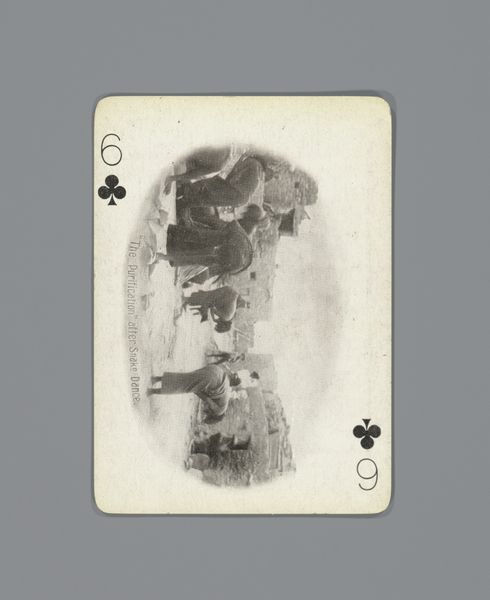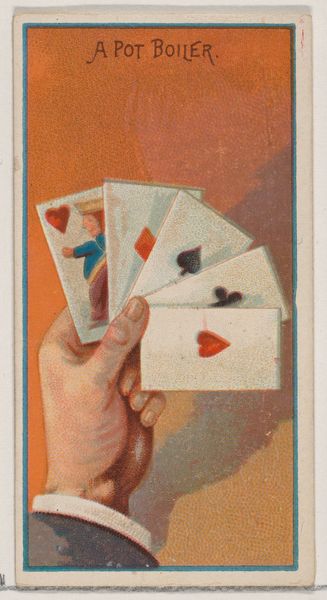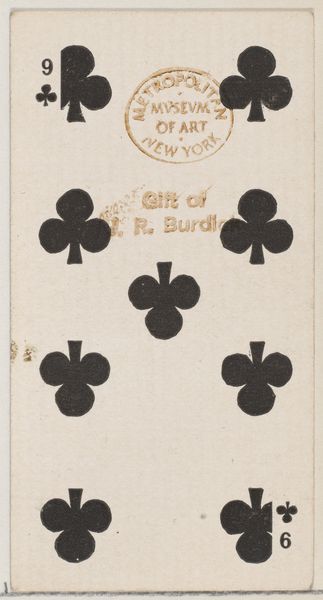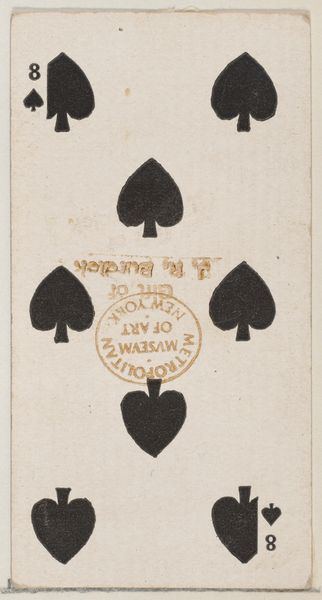
Five Hearts, from the Playing Cards series (N84) to promote Turkish Cross-Cut Cigarettes for W. Duke, Sons and Co. 1888
0:00
0:00
drawing, print, oil-paint, paper
#
drawing
#
aged paper
#
toned paper
#
art-nouveau
# print
#
oil-paint
#
paper
Dimensions: Sheet: 2 3/4 x 1 1/2 in. (7 x 3.8 cm)
Copyright: Public Domain
This is a card, Five Hearts, by W. Duke, Sons & Co., dating from around 1900, part of a series to promote Turkish Cross-Cut Cigarettes. The immediate impression is one of minimalist design: five red hearts arranged against a muted white background. The composition is simple: two hearts at the top, two at the bottom, and one centered, forming a stable yet dynamic visual rhythm. The use of red against white isn’t just decorative; it sets up a semiotic contrast between the vibrancy of the hearts—symbols of affection and vitality—and the neutrality of the background, perhaps alluding to the stimulating pleasure associated with smoking. The rigid geometry speaks to the formalist tradition, emphasizing shape and space over narrative. But this card is more than just aesthetic. It's a cultural artifact reflecting the rise of consumerism, where even simple shapes are mobilized for commercial ends. The heart, typically a signifier of deep emotion, here becomes a sign in a larger game of marketing. The structure of the card thus challenges fixed meanings, inviting us to decode how everyday objects mediate desire and meaning.
Comments
No comments
Be the first to comment and join the conversation on the ultimate creative platform.
